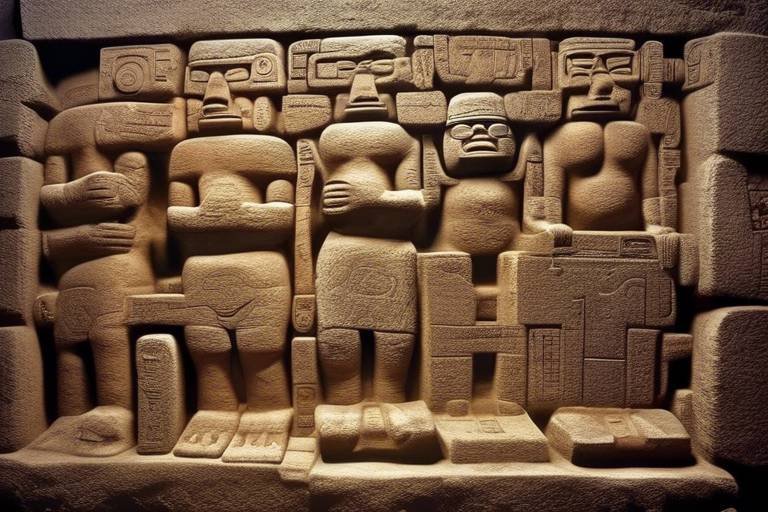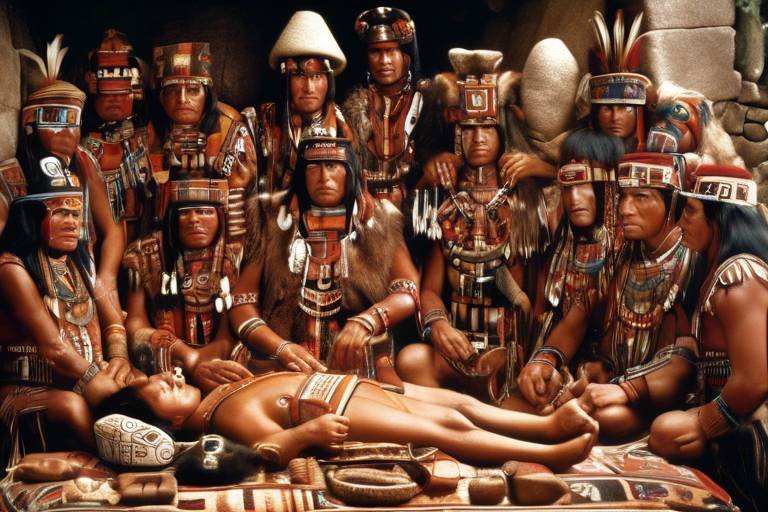Unraveling the Enigma of the Minoans
Unraveling the Enigma of the Minoans takes us on a journey through the intriguing civilization that once thrived on the sun-kissed island of Crete. Imagine stepping back in time to a world shrouded in mystery, where advanced societies flourished amidst grand palaces and vibrant frescoes. The Minoans, with their sophisticated culture and enigmatic downfall, continue to fascinate historians and archaeologists alike.
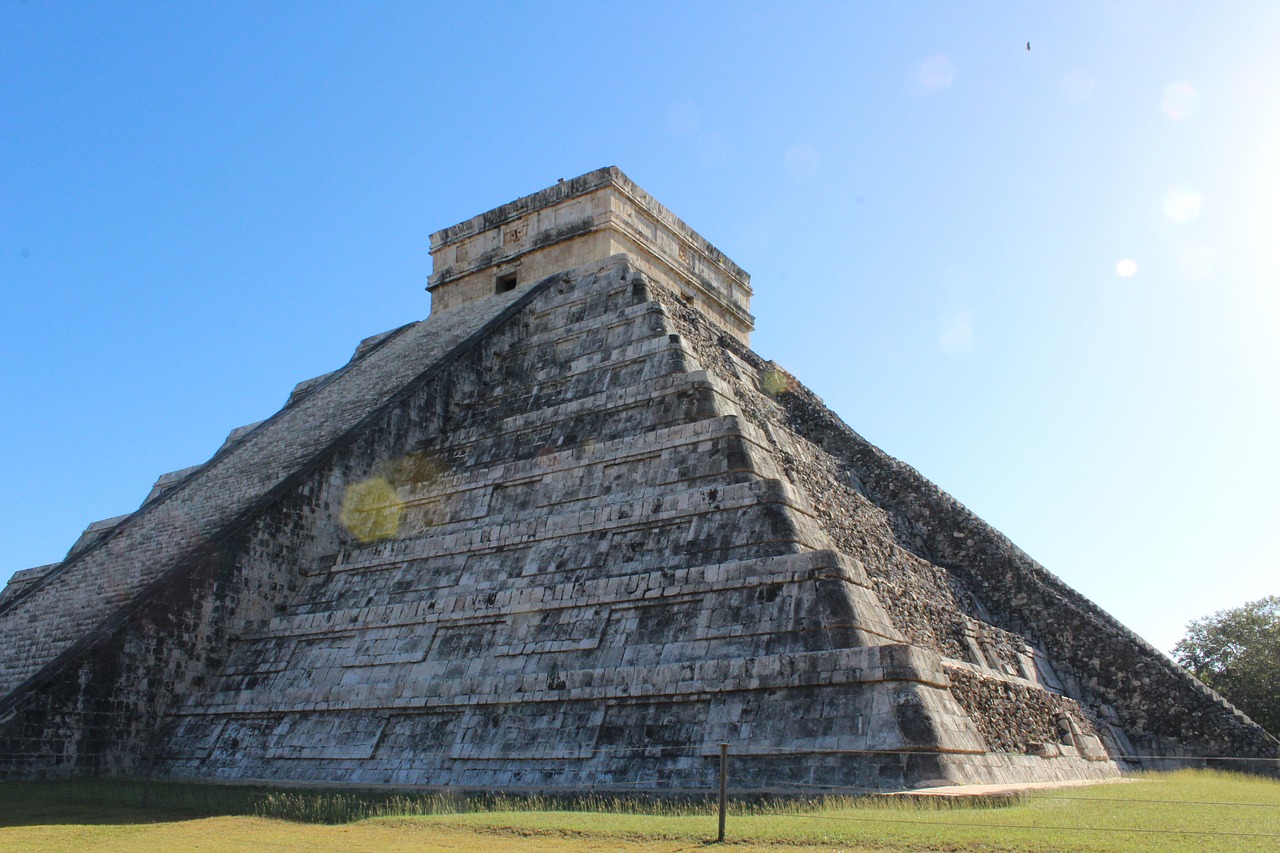
The Rise of the Minoans
The rise of the Minoans marks a fascinating journey from humble beginnings to a flourishing civilization that left an indelible mark on history. The origins of the Minoan civilization can be traced back to the island of Crete, where they established early settlements and laid the foundation for their remarkable society. Through innovative agricultural practices and strategic planning, the Minoans transformed their land into a prosperous hub of activity, fostering a sense of community and cooperation among its people.
As the Minoans expanded their influence, their social structure evolved, creating a cohesive society that valued art, education, and trade. The emergence of powerful leaders and skilled artisans contributed to the growth of the Minoan culture, setting the stage for the development of their distinctive art and architecture. Their grand palaces, intricate pottery, and vibrant frescoes reflected not only their artistic prowess but also their sophisticated taste and cultural identity.
Moreover, the Minoans' strategic location on the crossroads of maritime trade routes enabled them to establish extensive networks with neighboring civilizations, facilitating the exchange of goods, ideas, and technologies. This interconnectedness played a crucial role in the economic prosperity of the Minoans, allowing them to thrive and expand their influence beyond the shores of Crete.
Overall, the rise of the Minoans exemplifies the power of innovation, collaboration, and resilience in shaping a civilization that would leave a lasting legacy for generations to come. Their journey from humble beginnings to a sophisticated society serves as a testament to the ingenuity and creativity of the human spirit, transcending time and inspiring curiosity and admiration in modern-day scholars and enthusiasts.
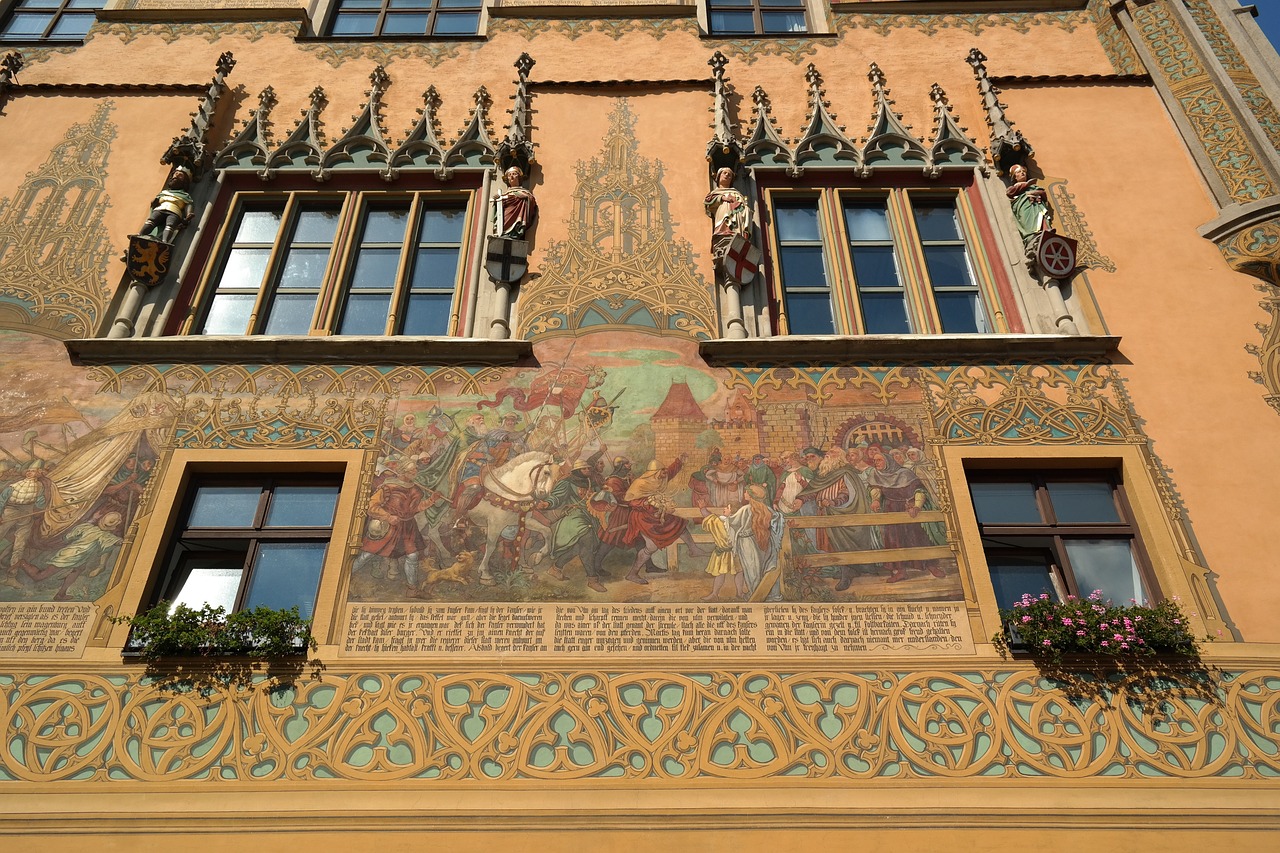
Minoan Art and Architecture
When delving into the world of Minoan art and architecture, one cannot help but be mesmerized by the exquisite beauty and innovative designs that characterized this ancient civilization. The Minoans were renowned for their vibrant frescoes, intricate pottery, and grand palaces that showcased their artistic prowess and architectural ingenuity.
The art of the Minoans reflected a deep connection to nature, with depictions of marine life, flowers, and animals adorning their walls. These vibrant frescoes not only served as decorative elements but also as a means of expressing their reverence for the natural world around them. The vivid colors and intricate details of these artworks provide valuable insights into Minoan culture and beliefs.
Moreover, Minoan architecture was equally impressive, with grand palaces such as Knossos standing as a testament to their advanced building techniques. These palaces featured intricate layouts, multi-story structures, and advanced plumbing systems, showcasing the sophistication of Minoan engineering.
One cannot discuss Minoan art and architecture without mentioning the significance of their religious beliefs in shaping these creations. Sacred symbols and depictions of religious ceremonies were prevalent in their artwork, emphasizing the importance of spirituality in Minoan society.
Overall, the art and architecture of the Minoans not only reflected their cultural richness but also served as a window into their sophisticated society. The legacy of their artistic achievements continues to inspire awe and admiration, leaving a lasting imprint on the annals of history.
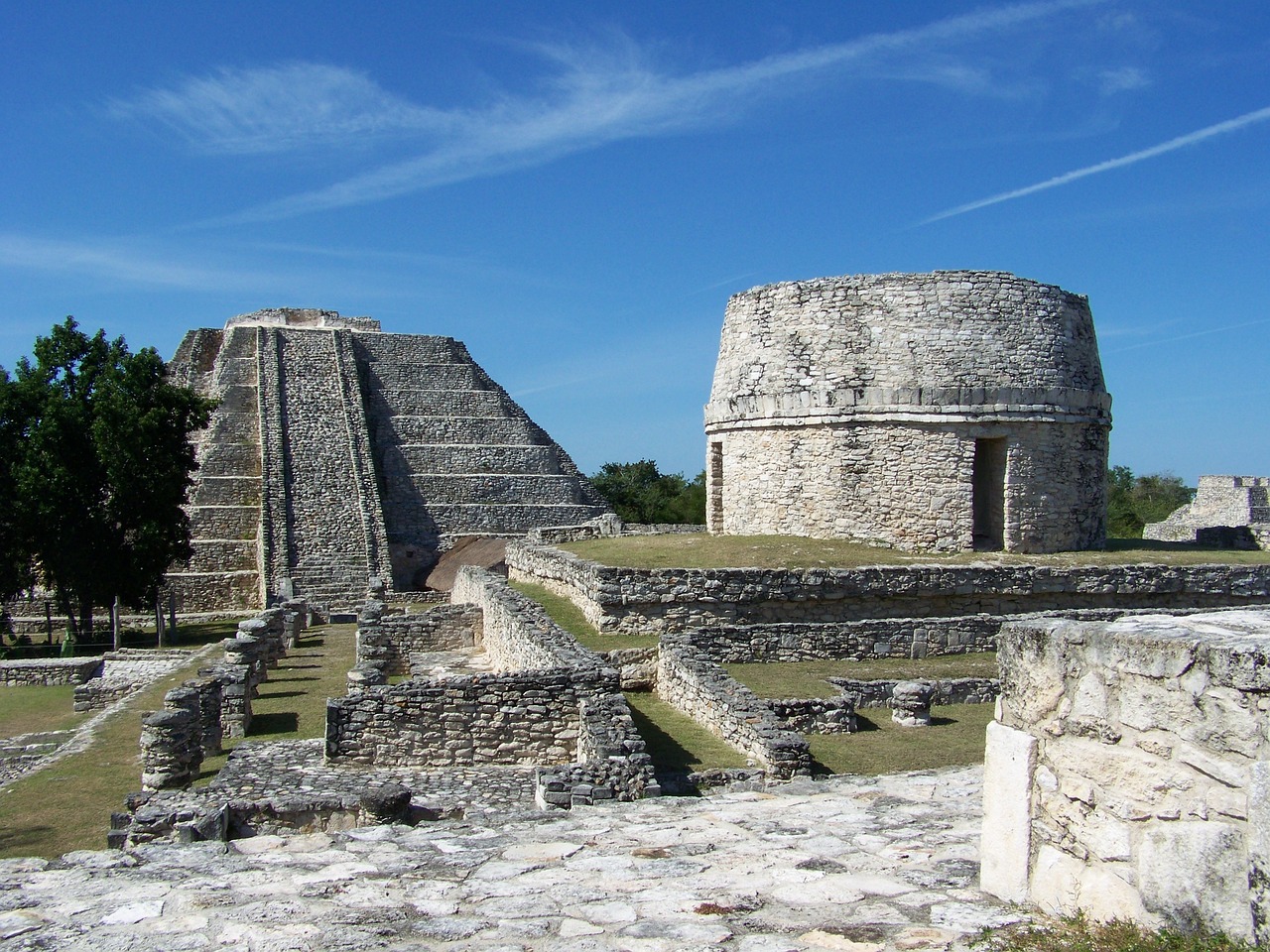
Minoan Religion and Rituals
The Minoan civilization had a rich tapestry of religious beliefs and ritual practices that played a significant role in their society. At the core of Minoan religion was the worship of nature, with a deep reverence for the earth, sky, and sea. They believed in the presence of powerful deities associated with natural elements, such as the Earth Goddess and the Bull God. These divine figures were often depicted in Minoan art and were central to their religious ceremonies.
Rituals held great importance in Minoan society, serving as a means of connecting with the divine and ensuring the well-being of the community. Sacred rituals were conducted in various settings, including palaces, temples, and caves, with offerings of food, drink, and symbolic objects made to the gods. Dancing, music, and processions were common features of Minoan religious ceremonies, reflecting their vibrant and celebratory approach to spirituality.
The Minoans also had a complex system of symbolism and sacred imagery that permeated their art and architecture. Labrys, a double-headed axe, and the Horns of Consecration were recurring motifs symbolizing power, fertility, and protection. These symbols were not only decorative but held profound spiritual significance, representing the interconnectedness of the natural and divine realms in Minoan belief.
Furthermore, the Minoans engaged in ritualistic practices that involved priests and priestesses performing sacred rites, such as purification ceremonies and animal sacrifices. These rituals were believed to maintain harmony with the gods and ensure the prosperity of the community. The Minoans' religious fervor and elaborate ceremonies underscored the integral role of spirituality in their daily lives and cultural expressions.

Minoan Trade and Economy
The Minoan civilization was renowned for its extensive trade networks and robust economy, which played a crucial role in their flourishing society. Situated strategically on the island of Crete, the Minoans engaged in maritime trade with various civilizations across the Mediterranean, facilitating the exchange of goods, ideas, and culture.
One of the key elements of the Minoan economy was their agricultural prowess. The fertile lands of Crete allowed for the cultivation of a variety of crops, including olives, grapes, wheat, and barley. This agricultural abundance not only sustained the local population but also enabled surplus production for trade with other regions.
Maritime trade was another cornerstone of the Minoan economy, with their advanced seafaring skills enabling them to establish trade routes with Egypt, the Near East, and the Aegean islands. The Minoans traded a wide range of goods, including pottery, textiles, precious metals, and exotic commodities such as ivory and spices.
Their trade networks extended far and wide, allowing them to access valuable resources and luxury items that contributed to the prosperity of their society. The bustling ports of Crete served as hubs for commercial activities, fostering economic growth and cultural exchange.
Moreover, the Minoans were known for their intricate craftsmanship and artistic skills, which added to the allure of their trade goods. The exquisite pottery, intricate jewelry, and vibrant frescoes produced by Minoan artisans were highly sought after in the ancient world, further boosting their economic prosperity.
Despite the wealth and success of their trade ventures, the Minoan economy was not immune to external pressures and internal challenges. Theories suggest that factors such as natural disasters, political instability, and invasions may have contributed to the eventual decline of the Minoan civilization, leading to the end of their vibrant trade networks and economic dominance.
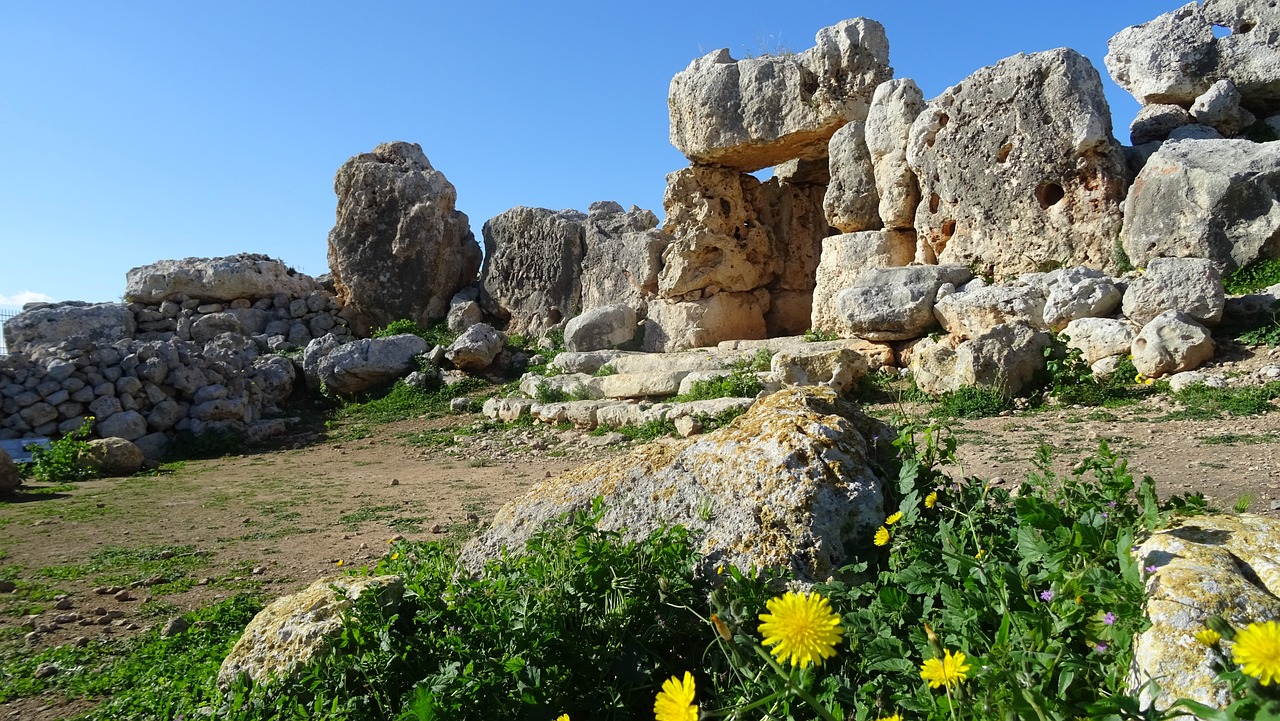
The Decline of the Minoans
Delving into the enigmatic decline of the Minoan civilization unveils a tapestry of theories and conjectures that have puzzled historians and archaeologists for centuries. The once-thriving society that flourished on the island of Crete faced a mysterious downfall that continues to spark debates and speculations.
One prevailing theory suggests that natural disasters, such as earthquakes and volcanic eruptions, played a significant role in the decline of the Minoans. The geological instability of the region, marked by the cataclysmic eruption of Thera (modern-day Santorini), is believed to have unleashed devastation upon the island, triggering a chain of events that led to the collapse of Minoan civilization.
Another compelling hypothesis revolves around the invasion and conquest of Crete by foreign powers, particularly the Mycenaeans. The rise of Mycenaean influence in the Aegean region and the potential conflict between the two civilizations have been cited as possible factors contributing to the decline of the Minoans.
Moreover, internal strife and social upheaval within Minoan society have been proposed as underlying causes of their downfall. The erosion of political stability, economic challenges, and societal unrest may have weakened the once-mighty civilization, leaving it vulnerable to external pressures and internal conflicts.
Archaeological evidence, including the destruction layers found in Minoan palaces and the abandonment of key settlements, supports the notion of a catastrophic event that precipitated the decline of the Minoans. The enigmatic nature of their disappearance continues to fuel scholarly investigations and fuel the imagination of those intrigued by the mysteries of the past.
As we unravel the threads of time and delve deeper into the enigma of the Minoans, the quest for answers surrounding their decline remains an ongoing journey of discovery and interpretation. The legacy of this ancient civilization, shrouded in mystery and intrigue, continues to captivate our curiosity and inspire further exploration into the secrets of the past.

Minoan Writing and Language
The Minoans left behind a puzzling legacy when it comes to their writing and language. At the heart of this mystery lies the script known as Linear A, a form of writing that has yet to be fully deciphered. Scholars have grappled with the intricacies of this ancient language, trying to unlock its secrets and gain insights into the daily lives and beliefs of the Minoan people.
Linear A consists of a series of symbols and characters, but its meanings remain elusive. Without a Rosetta Stone to provide a key for translation, researchers have faced significant challenges in understanding the texts written in this enigmatic script. The absence of a bilingual text or a known language related to Linear A has hindered progress in deciphering this ancient writing system.
Despite the obstacles, scholars have made strides in identifying patterns and recurring sequences in Linear A inscriptions. By analyzing the context in which these writings appear, researchers have been able to propose hypotheses about the possible meanings of certain symbols. However, the full extent of the vocabulary and grammar of the Minoan language remains a subject of ongoing debate and investigation.
One of the enduring questions surrounding Minoan writing is whether Linear A was used for administrative purposes, religious texts, or personal correspondence. The diverse contexts in which these inscriptions have been found suggest a multifaceted use of the script, indicating that it played a significant role in various aspects of Minoan society.
As researchers continue to study and analyze the remnants of Minoan writing, new discoveries and interpretations shed light on the linguistic capabilities of this ancient civilization. The quest to unravel the enigma of Minoan language remains a captivating journey into the past, offering tantalizing glimpses into the cultural richness and complexity of the Minoan world.
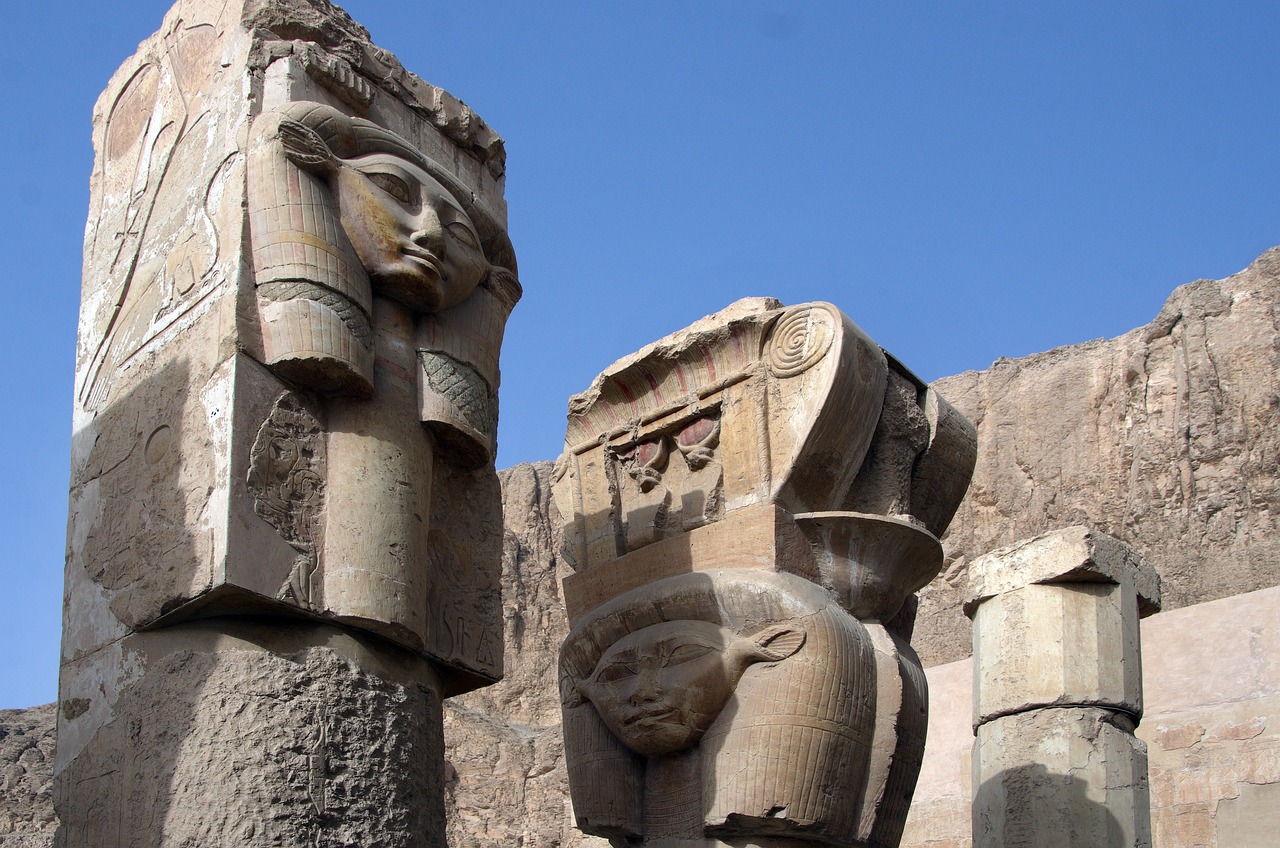
Legacy of the Minoans
The legacy of the Minoans continues to echo through the annals of history, leaving a profound impact on art, culture, and mythology. Their artistic achievements, such as the vibrant frescoes adorning the walls of their palaces, showcase a level of sophistication and creativity that still mesmerizes observers today. The intricate pottery and intricate jewelry crafted by the Minoans reflect their mastery of craftsmanship and aesthetic sensibility, setting them apart as innovators in the ancient world.
Furthermore, the architectural marvels of the Minoans, including the grand palaces of Knossos and Phaistos, stand as testaments to their advanced engineering skills and urban planning. These structures not only served as administrative centers but also as symbols of power and cultural identity, shaping the landscape of Crete and influencing future architectural styles.
Moreover, the mythology and religious beliefs of the Minoans have left an indelible mark on subsequent civilizations, with echoes of their sacred symbols and nature worship reverberating in later mythological traditions. The enigmatic figure of the bull, central to Minoan religious iconography, continues to fascinate scholars and artists alike, symbolizing strength, fertility, and spiritual significance.
As contemporary scholars continue to unravel the mysteries of the Minoans, their legacy endures as a source of inspiration and fascination. The enigmatic nature of their civilization, shrouded in myth and legend, invites further exploration and interpretation, sparking new avenues of research and creative expression.
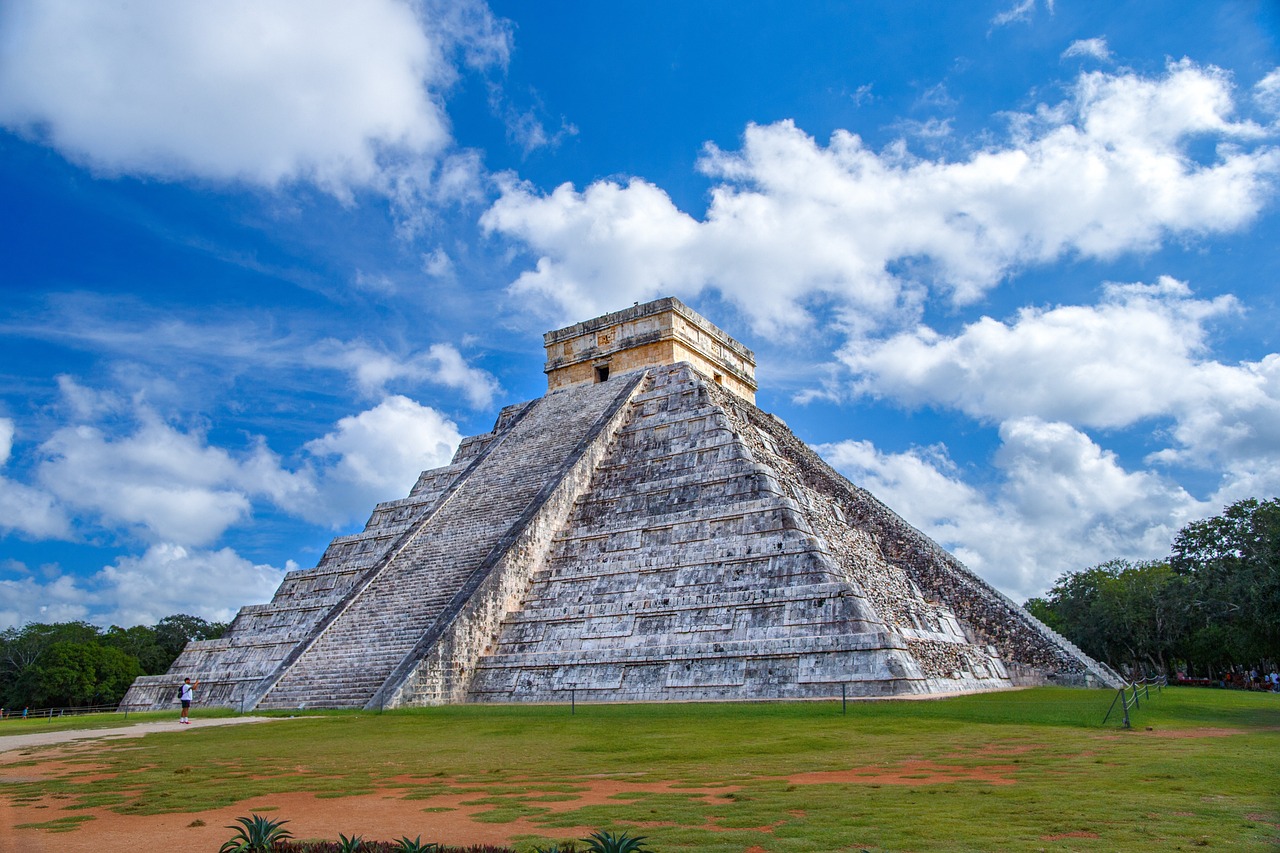
Unanswered Questions and Ongoing Research
As we unravel the enigma of the Minoans, numerous unanswered questions continue to intrigue researchers and fuel ongoing archaeological investigations. One of the primary mysteries that researchers are still grappling with is the decipherment of the Minoan script known as Linear A. Despite numerous attempts, the language encoded in this script remains elusive, presenting a significant challenge to understanding the full extent of Minoan society.
Another area of ongoing research revolves around the enigmatic decline of the Minoan civilization. While theories abound, ranging from volcanic eruptions to foreign invasions, the exact cause of their downfall remains a subject of debate among scholars. Archaeological excavations and scientific analyses continue to shed light on this critical period in Minoan history.
Furthermore, the extent of Minoan influence and interactions with neighboring civilizations remains a topic of interest for researchers. The intricate trade networks established by the Minoans connected them to various regions around the Mediterranean, but the full extent of their economic relationships and cultural exchanges is still being explored through interdisciplinary studies.
Recent discoveries have also raised questions about the social structure and political organization of the Minoans. The elaborate palaces and sophisticated artwork hint at a complex society, but the precise roles of individuals within this hierarchical system remain a subject of conjecture. Ongoing research aims to uncover the nuances of Minoan governance and societal dynamics.
In conclusion, the enigmatic civilization of the Minoans continues to captivate the imagination of scholars and enthusiasts alike. The unanswered questions and ongoing research surrounding their culture and history underscore the enduring legacy of this ancient civilization and the importance of continued exploration and discovery.
Frequently Asked Questions
- What is the significance of the Minoan civilization?
The Minoan civilization, thriving on the island of Crete during the Bronze Age, is significant for its advanced culture, sophisticated art, and mysterious downfall that continues to intrigue researchers.
- What are some key aspects of Minoan art and architecture?
Minoan art and architecture are known for their vibrant frescoes, intricate pottery, and grand palaces, reflecting the creativity and innovation of this ancient civilization.
- How did religion influence Minoan society?
Religion played a crucial role in shaping Minoan society through their worship of nature, sacred symbols, and mysterious ceremonies that permeated daily life.
- What led to the decline of the Minoan civilization?
Theories suggest that natural disasters or invasions may have contributed to the enigmatic decline of the Minoans, leading to the eventual downfall of their once-thriving culture.
- What is the legacy of the Minoans in contemporary times?
The legacy of the Minoans endures in art, culture, and mythology, continuing to captivate scholars and inspire modern artists, showcasing the richness of their cultural heritage.
- What ongoing research is being conducted on the Minoans?
Ongoing research and archaeological discoveries aim to unravel the lingering mysteries and unanswered questions surrounding the Minoans, deepening our understanding of this fascinating ancient civilization.



